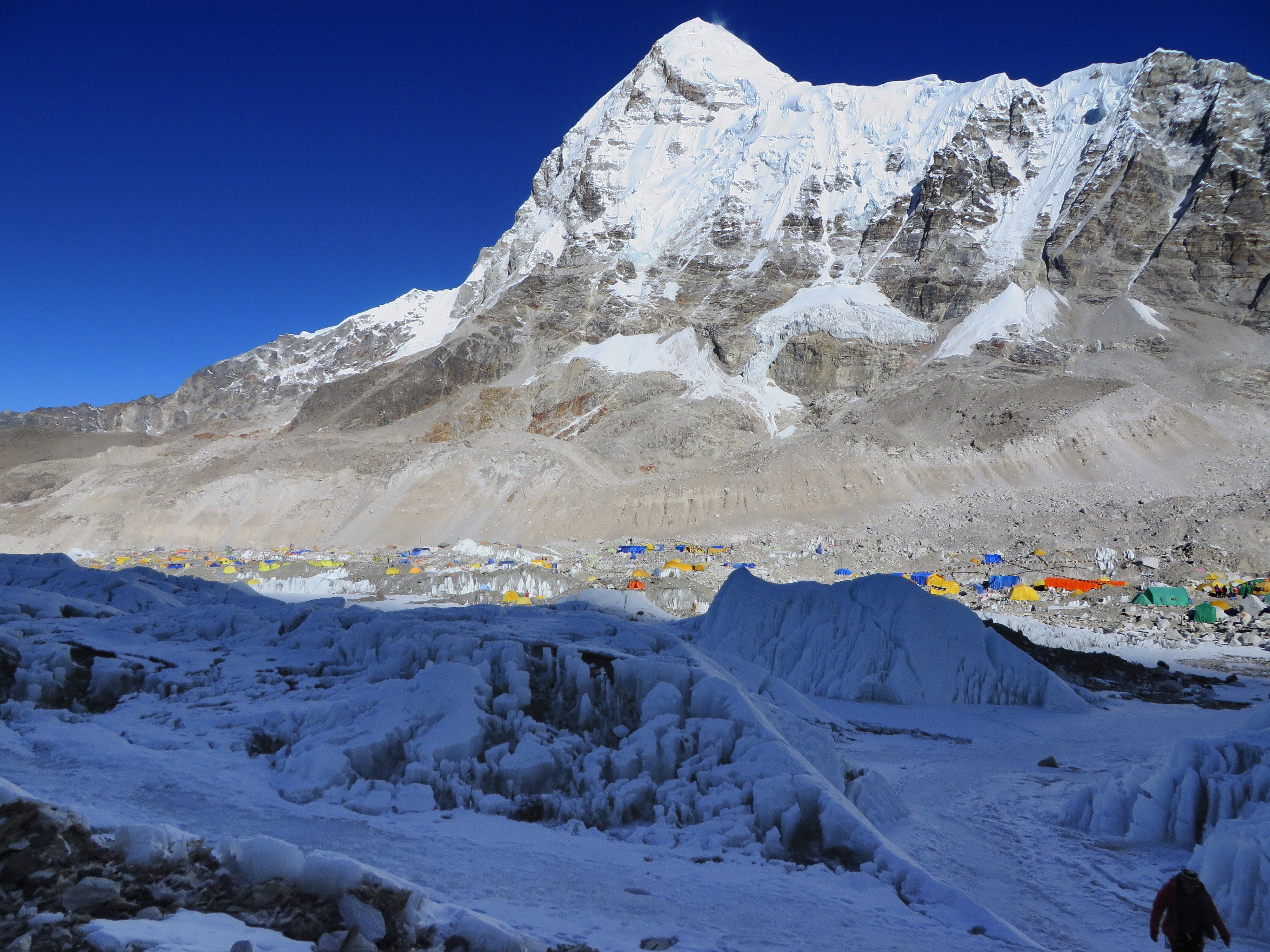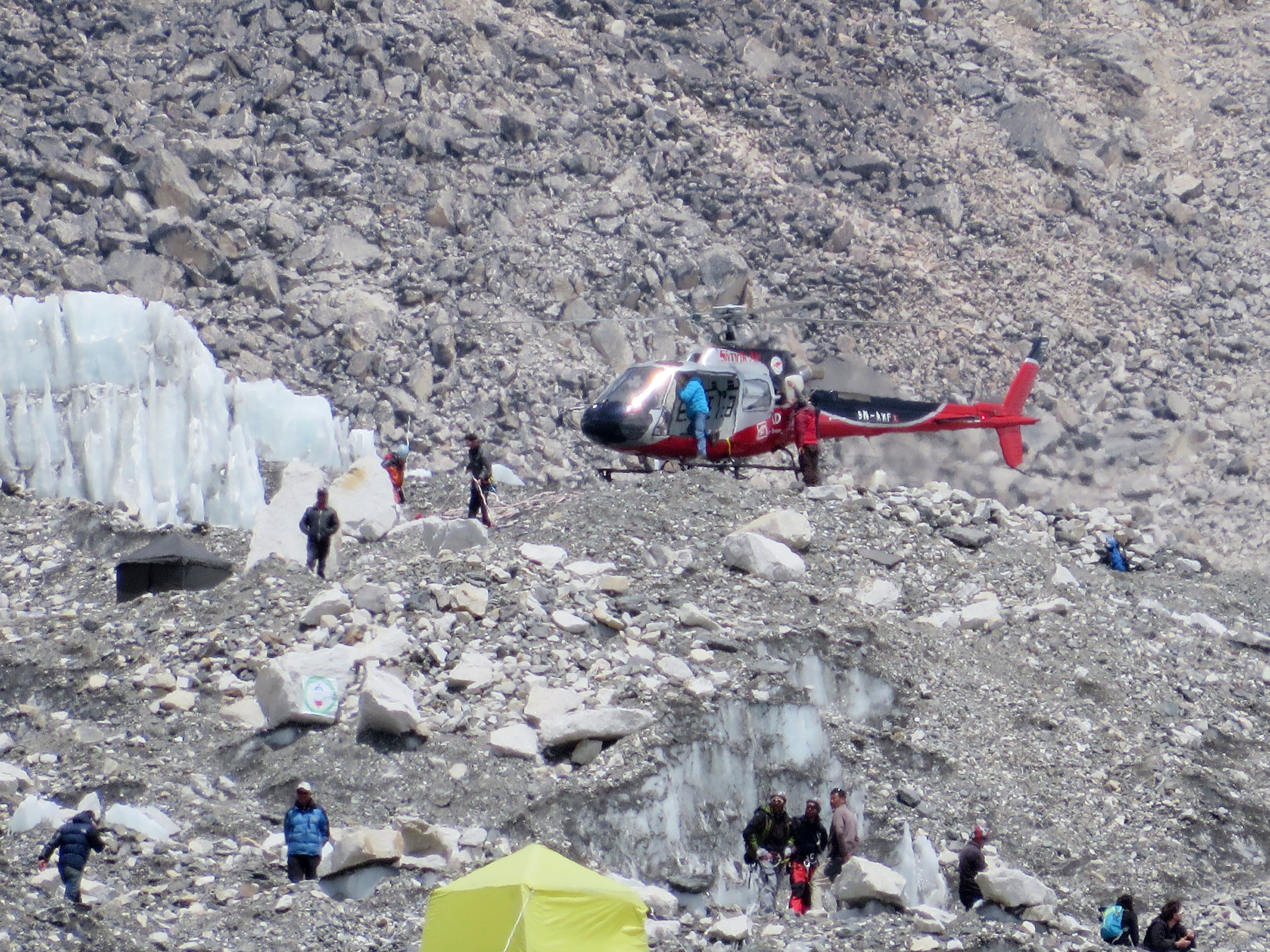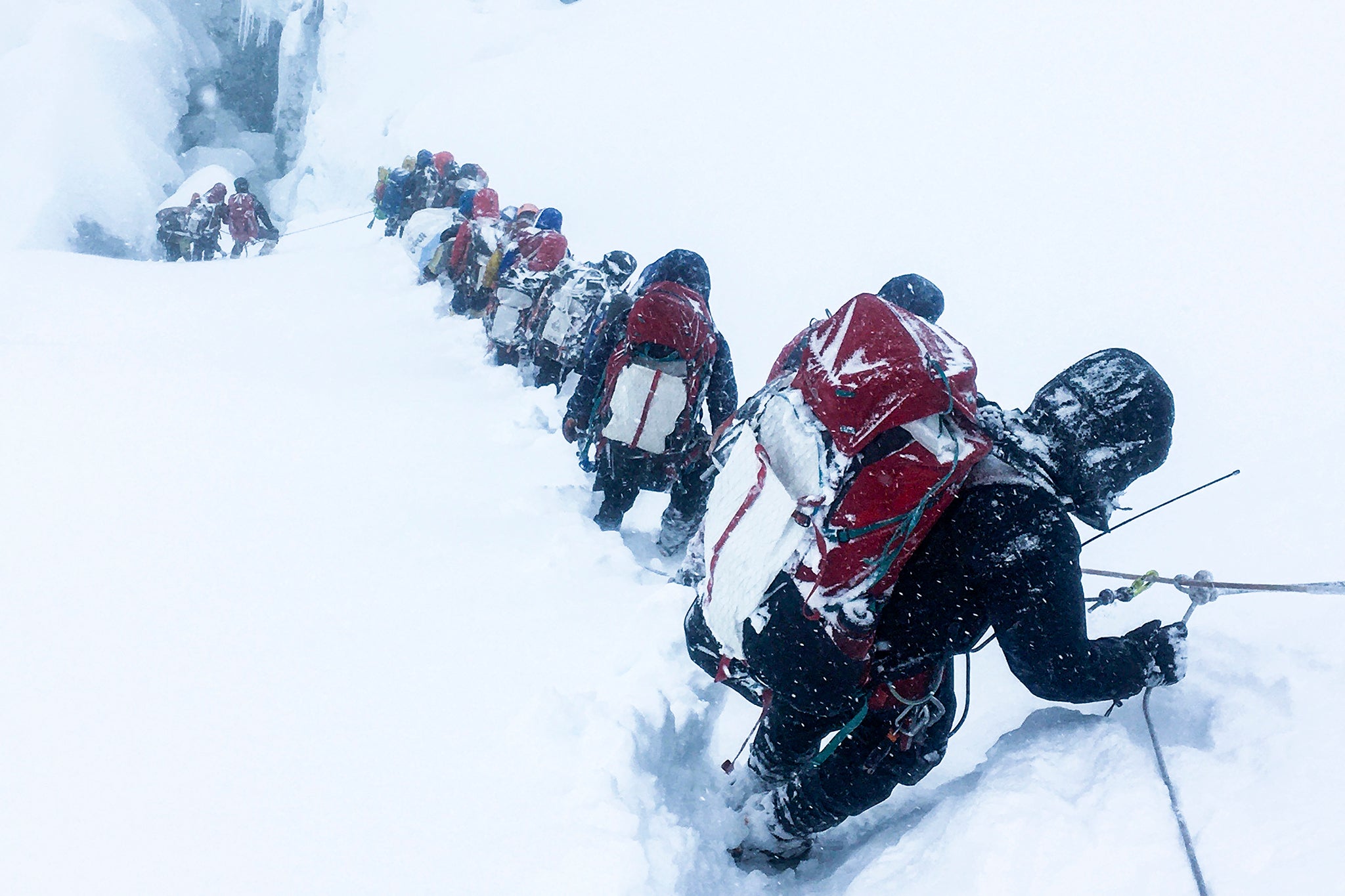From mandatory GPS trackers to poo bags: All the new rules for Everest climbers
Last year was deadliest season on Everest with 18 climbers losing their lives
Nepal has announced a new set of rules for mountaineers in the Himalayas, including one ordering them to carry GPS trackers following a deadly year in which 18 people died on Everest and at least five bodies were left unrecovered on the mountain.
With the spring climbing season underway, Nepali officials say climbers must carry small, passive trackers which can be sewn into a jacket and don’t need power. They can be detected through packed snow up to 20 yards away and further when tracked from the air using a handheld detector.
“The trackers are mandatory for climbers this year, so that if there is an accident their location can be accurately identified,” Rakesh Gurung, director of mountaineering at Nepal’s tourism department, was quoted as saying by AFP.

Last month, authorities also announced that Everest climbers will be obliged to bring their excreta back to the base camp in poo bags after summiting the peak.
The new regulation followed increasing complaints about the volume of human waste lining the routes up the mountain, which is prevented from degrading naturally by the extreme cold temperatures.
Nepal has eight of the world’s 14 highest peaks. According to Nepal’s ministry of tourism, by 14 May last year towards the end of the climbing season, the government had generated revenues of £4.5m from mountain tourism, £3.9m from Everest alone.

Professional climbers and some expedition companies have long used advanced trackers to monitor climb progress and provide data for sponsors. However, the newly required GPS trackers will be simpler, passive devices with limited features, no bigger than a USB stick, power-free, and easily integrated into a jacket’s fabric.
These trackers, costing between £8 and £12 each, will be supplied by the trekking company and reused by detaching them from the climbers upon their descent.
Last year, 60,000 tourists visited Sagarmatha National Park, home to Everest, with 600 attempting the summit. The mountain is littered with tons of waste, including empty cans, bottles, gas canisters, abandoned climbing equipment, as well as plastic and human waste, earning it the unfortunate title of “the highest dumpster in the world”.

The Sagarmatha Pollution Control Committee reportedly is in the process of procuring approximately 8,000 excreta bags from the US, which will be distributed among climbers, sherpas, and support staff. Each person will be allotted two bags, designed for multiple uses.
These bags are equipped with chemicals that solidify human waste and significantly reduce its odour.
Jonathan Reilly, director of the British Expedition Company, which organises treks to Everest base camp, told the Telegraph: “The waste on Everest is ridiculous.
“The question I have is, will climbers bring the poo bags back down the mountain or will they just discard them up there, a bit like dog walkers throwing away plastic bags of dog poo? That would be worse than the current situation because the bags will make it impossible for the waste to biodegrade.
“I suspect there will be some climbers who use the bags and then dump them rather than bring them down the mountain.”

Similar initiatives have already successfully been implemented on other mountains, such as Mount Denali in Alaska, and have reportedly been welcomed by Everest expedition operators.
The rapid growth of the climbing industry on Everest has led to intense competition and safety concerns. Limited weather windows cause dangerous bottlenecks, exposing climbers to increased risks as they wait in harsh conditions and use up oxygen. There’s also anxiety about operators taking inexperienced climbers into the hazardous “death zone” above 8,000m, heightening danger for all on the mountain.

In October last year, after visiting Nepal’s high peaks, UN secretary general Antonio Guterres emphasised the urgent need to end the fossil fuel era, highlighting the alarming rate of Himalayan glacier melting due to global warming.
Mr Guterres, who toured the base camps of Mount Everest and Mount Annapurna, stressed the devastating impacts he observed: record glacier melting, increased risk of natural disasters like rockslides, landslides, avalanches, and threats to cultures due to rising rivers and seas.

“I am here today to cry out from the rooftop of the world: stop the madness,” Mr Guterres said at the time. “The glaciers are retreating, but we cannot. We must end the fossil fuel age.”
A report earlier in 2023 by the Nepal-based International Centre for Integrated Mountain Development said that the Himalayas could lose up to 80 per cent of their glaciers if the earth warms by 4C in the coming decades or centuries.
“We must act now to protect people on the frontline. And to limit global temperature rise to 1.5C,” Mr Guterres said.
Join our commenting forum
Join thought-provoking conversations, follow other Independent readers and see their replies
Comments
Bookmark popover
Removed from bookmarks